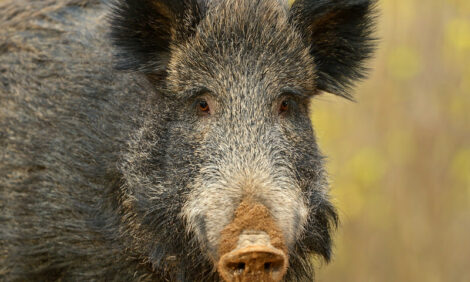



NADIS BPEX Commentary – June 2010
UK - Scouring during the growing phase of a pigs life has long been recognised as one of the major hazards in both commercial and hobby farming systems, according to BPEX's monthly NADIS commentary for June 2010.The NADIS pig monitoring programme, which concentrates on a representative sample of herds from the commercial sector, is based on recording the prevalence of the syndrome of scour – rather than specific diagnosis. However, it is broadly accepted that the causes of scour in the immediate post weaning period – up to eight weeks of age, typically first stage weaning – are somewhat different to those occurring later in life. As such the monitoring is divided into these two groups. Data has been collected for the last three years and certain factors are of interest.
Post weaning scour declined in the second half of 2008 and 2009 but has shown a marked upturn over the recent turn of the year – corresponding to the severe cold weather experienced this winter (Graph 1a).

This numerical pattern was mirrored in anecdotal reports highlighting the difficulties faced by weaned pigs when room temperatures cannot be raised. A similar rise was also seen in grower scours in the winter following reductions in prevalence through 2009 (though not in 2008). With commodity prices varying widely over the last few years, the dietary recipes have continually changed and thus may have played a role in affecting feed digestibility (Graph 1b). There remains, however, a marked reduction from the higher levels seen in 2007

Looking at farm type and size, post weaning scour is most prevalent in the smaller breeder weaner farms. Interestingly, levels are lowest in nursery only units. Given that post weaning scour is heavily influenced by hygiene, it may suggest this is easier to achieve in an isolated nursery, particularly if it operates on an All In – All Out policy (Graph 2 & 3).


The hygiene theme raises its head again when looking at post weaning scour against management systems. Levels seen on straw based systems, in which dung recycling is inevitable, are 50 per cent higher than on slats whereas post weaning scour in batch systems is a fraction of that seen in continuous flow systems (Graph 4a).

These differences are far less marked for grower scour (Graph 4b). Here prevalence of scoured pigs is less than half in straw systems compared to slats. Whilst difficulties of observing loose dung in straw may possibly lead to under recording of the prevalence there, the observations suggest that hygiene per se plays a reduced role in the pathogenesis of grower scours compared to the immediate post weaning period. Whilst specific diseases, such as swine dysentery maybe involved, the role of dietary digestibility may again be more significant. There is a sparing effect of batch growing compared to continuous flow, but the difference for grower scour is far less noticeable than for post weaning scours.

It is difficult to explain here why outdoor derived weaners should see such a high level of grower scours compared to indoor produced pigs.
Regionally, the most noticeable differences are the very low levels of post weaning scour in East Anglia and the much higher levels of grower scours in the Midlands (Graph 5).

Further Reading
| - | Find out more information on Scour (E. coli) by clicking here. |








